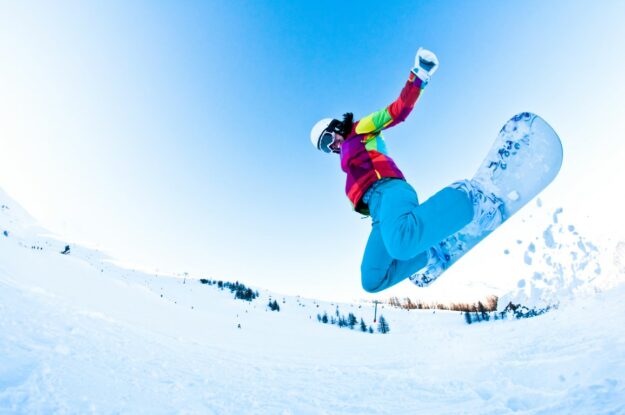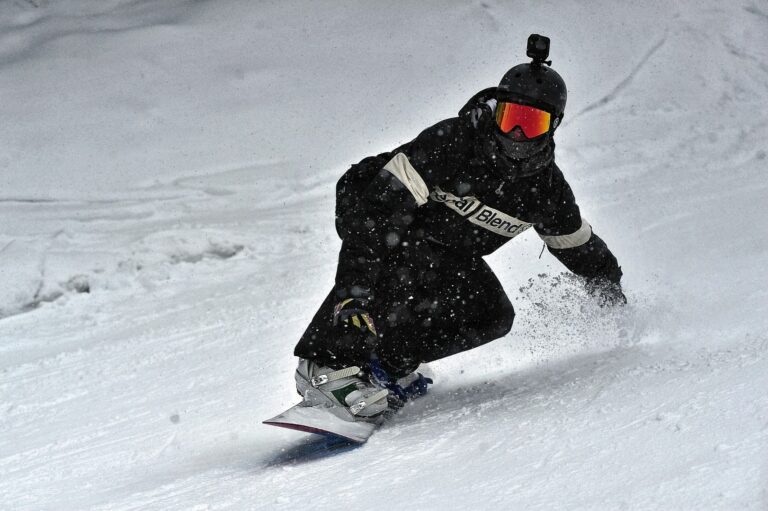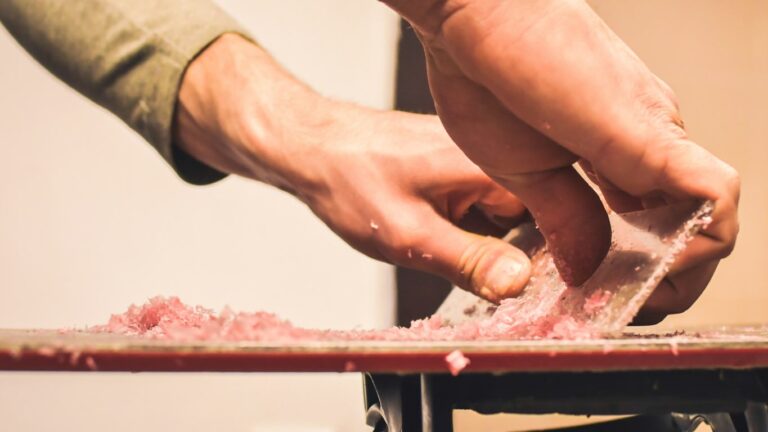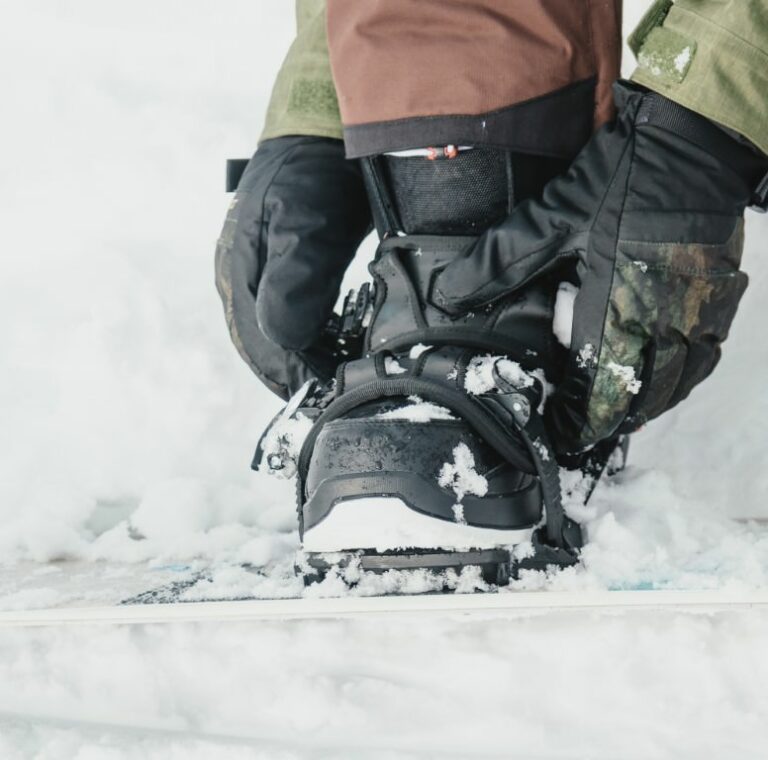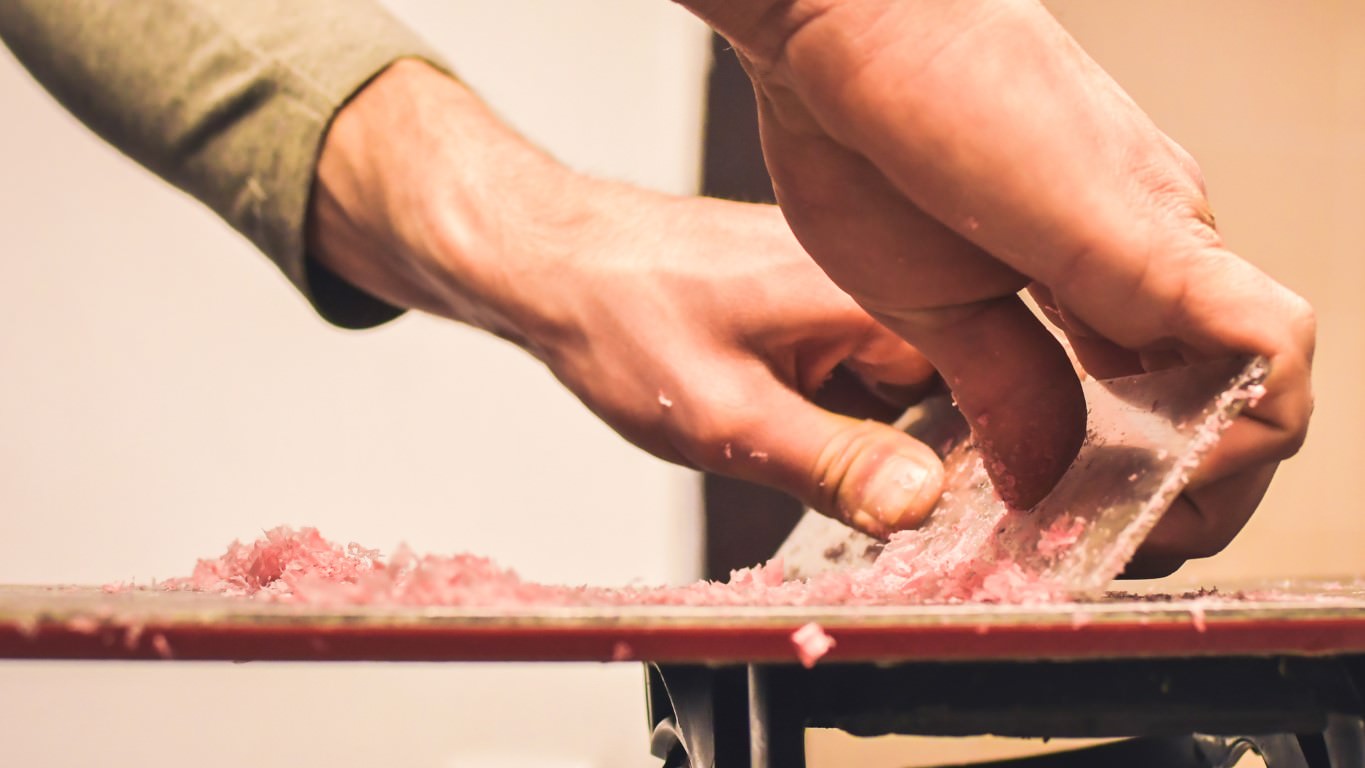The written FIS rules
While this article is about the unwritten rules of skiing and snowboarding etiquette, there is a comprehensive list of written rules that should be adhered to first and foremost. The ten FIS (International Ski and Snowboard Federation) rules of conduct spell out exactly how we should all behave on the slopes.
These rules are the ten commandments of mountain use which you should know and understand. The entire document, which includes notes and additional environmental rules, is only six pages long and will take you about ten minutes to read. So start there.
The Golden Rule of the Slopes: Uphill vs Downhill Right of Way
The primary rule of skiing and snowboarding is simple yet pivotal. The person downhill/ahead always has the right of way. That’s because uphill skiers and snowboarders can see what’s happening below them. Conversely, those in front don’t have eyes in the backs of their heads, so they have no idea what’s going on behind them, which can be dangerous.
Put simply, the downhill skier or snowboarder can do what they like. It is your responsibility as the uphill slope user to be able to avoid them whatever they do. So if you crash into them you are always to blame, even if they do something stupid.
To clarify:
- Someone downslope suddenly stops and you crash into them. Your fault.
- Downhill skier or snowboarder turns unexpectedly and you hit them. Your fault.
- Person ahead falls and you cannot avoid crashing into them. Your fault.
- The only exception to this rule is if you overtake someone and then immediately slow down and/or cut in front of them. If they then hit you, it’s your fault.
Maintaining Safe Distances: Giving Others Their Space
This moves us nicely onto maintaining safe distances between you and the downslope users. A safe stopping distance depends on your ability, how fast you are going, the conditions, how busy it is and how difficult the slope is.
It is an ever-changing dynamic that you need to consider constantly. But as a rule of thumb, you need to leave enough space so that when (not if) a downslope user does something you don’t expect you can safely stop or avoid them without causing a collision.
Speed is not your friend
I regularly tell newer snowboarders that speed is your friend, as everything about snowboarding becomes easier when you are not moving slowly. While this is true, it only applies when the speed is under control.
Going too fast for the conditions, how busy the slopes are, or your ability is the cardinal sin of skiing and snowboarding. Yes, to get better you need to push yourself, but exceeding your ability at the wrong time puts yourself and others in danger and is very inconsiderate.
Stopping Safely: Choosing Your Rest Spots Wisely
Whether you’re catching your breath, waiting for a friend or snapping a scenic photo, be mindful of where you stop. NSAA studies show that many accidents occur when a skier or snowboarder stops in an unsafe spot.
To stop safely, do so at the side of the trail or behind a slow sign. On wide, quiet pistes, it can be acceptable to stop in the middle, but consider whether your position will make it difficult for those coming down. For example, stopping just above a chairlift post is not going to impact other slope users, while stopping between a post and the side of the piste creates a bottleneck.
Always stop where you are visible from above. Never stop just beyond a steep drop-off or a sharp curve. But bear in mind people often stop where they fall, it is not a conscious decision. So you might go over a lip to find someone lying in the snow, possibly with other people standing around helping.
If someone stops somewhere stupid it is still your fault if you crash into them. So slow down, control your speed as you approach blind bends and lips, it is your responsibility to be able to avoid any as yet unseen obstacles.
Look Up-Slope
Before you start skiing or snowboarding, always check up-slope first. While it is the uphill slope user’s responsibility not to hit you while you’re stationary, when setting off you must give way to people already skiing or snowboarding down the mountain.
So, if you suddenly go from standing still to cutting across a slope, not only are you needlessly putting yourself and others in danger, but it would also be your fault if there was a collision. The same applies when coming back onto the slope from off-piste.
In addition to this, while sliding, it is sensible to check up the slope before dramatically changing direction. While it would be the upslope skier or snowboarder’s fault if they hit you, you can reduce risk by knowing what is around you before doing something unexpected.
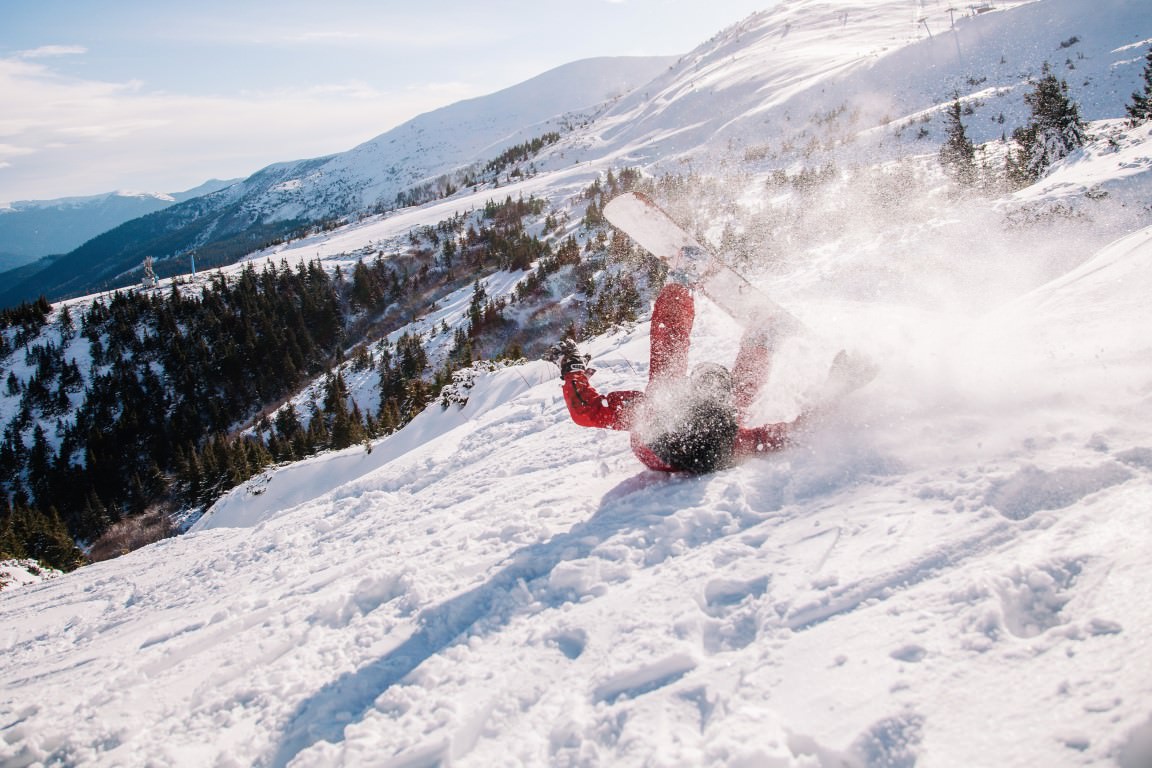
Overtaking Etiquette: Passing Skiers and Snowboarders Properly
When overtaking, provide plenty of space for the downhill skier or snowboarder to suddenly turn, stop, fall over or pop a trick. Again this is about finding the balance between your ability, how busy it is, the conditions, the difficulty of the slope and the speed you are going.
If you are going to pass too close to deal with the unexpected, then slow down and stay behind them. Then overtake once there is room to give them enough space.
On narrow runs, such as cat-tracks, it is popular in North America to announce which side you are passing. This helps to avoid surprises. But be aware people might not hear you, or understand you, for example, “on your left” in much of Europe will mean nothing to most slope users. As the upslope user, even if you shout your intentions, it will still be your fault if you collide.
Lift Line Manners: Patience and Politeness Pays Off
Lift lines can be long and frustrating during peak times, often with an element of unorganized jostling. But stay patient, observe the queue, assist people if needed, obey any attendants and be considerate to others.
Be aware that some people get upset if your skis or board touch theirs. A scratch or scrape in the queue is far less damage to your kit than you’ll probably dole out yourself on the slopes. But while you might not care about your battered gear or rental stuff, others can be very precious about theirs, particularly if they recently spent hundreds of dollars on it.
Now it can be impossible not to clash kit in a lift line, so observe reactions, be polite and apologetic. Likewise, understand that the person behind you is not deliberately bumping your skis or board, as they’re being jostled as much as you are. Ultimately, a friendly attitude while queueing translates into a more enjoyable day on the mountain.
Understanding Mountain Signage: Respect for Rules and Warnings
Mountain signs are the language of the slopes. They indicate trail difficulties, boundary lines, and potential hazards. This is pretty obvious, but when you see a slow sign, slow down. If you see a pole with a hazard sign don’t bomb past it, as it indicates something dangerous.
Different countries, and in some cases, different resorts use slightly different signage. It is your responsibility to understand what these mean. Normally the signage is explained on the piste maps you can pick up, but most sign meanings are obvious.
Sharing the Mountain: Respecting Non-Ski/Snowboard Areas
Skiers and snowboarders are not the only slope users. You’ll also spot people snowshoeing, tobogganing, ski touring (uphill skiing), and even hiking or fat-biking. Often the zones of the mountain for these users are segregated from the rest, so be respectful and don’t ski or snowboard there.
Equally, some areas of the mountains are off limits due to wildlife or other environmental reasons. You could damage rare flora, disturb protected fauna or even wake a hibernating bear!
Accident Protocol: How to Respond When Things Go Wrong
If you see someone fall or spot someone on the ground, your first action should be to check they are okay. Most of the time, they will be back up and enjoying the slopes in just a few moments. If their ski has come off and is up slope from where they have stopped, collecting it on your way past is a kind thing to do.
If you witness or are involved in an accident where someone gets hurt, your actions can greatly improve the outcome.
- Check they are conscious and ensure the injury is not life threatening. If it is, you should use whatever first-aid skills you have to keep them alive while signaling for help from other slope users.
- Secure the scene safely by crossing skis or planting a snowboard upright in the snow, where they will be visible to approaching slope users.
- Contact ski patrol who are trained in mountain first aid and evacuation procedures. Their phone number is usually on the lift map and lift pass. In many ski resorts, you can call the national emergency services number. Alternatively, go to the nearest lift station.
Snowboarder-Skier Relations: Breaking Down the Divide
Some of my best snowboarding buddies are skiers, which says it all really. Skiers and snowboarders share so much in common. After all, we are both just sliding on snow in slightly different ways. Hating on each other is akin to backstroke swimmers hating breaststroke swimmers, so please drop the attitude and share the mountain.
The easiest way to do this is ski or snowboard with people from the ‘dark-side’. Then you’ll begin to understand and appreciate how they use the slopes.
And remember, a skier or snowboarder who’s ahead did not just cut you up or deliberately stop you from overtaking. They are downslope and probably have no idea you are there. It is their right to turn how and when they want and to use the mountain in their way. It is your job as the upslope user to avoid them no matter what they do.
As a snowboarder, I make a point of helping skiers whose skis have come off. It is easy enough to pick them up and slide down to where they are, and it helps improve respect between the sports.
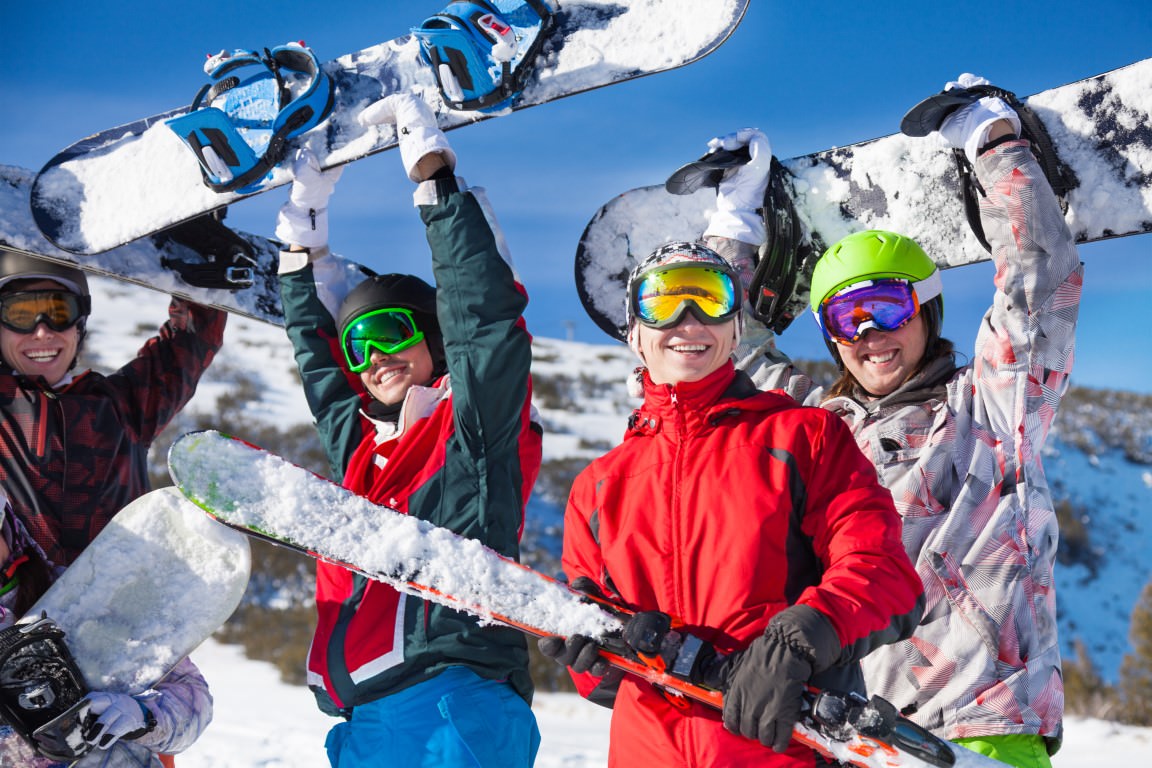
Alcohol and Substance Use: Staying Safe and Respectful
Après-ski is a huge part of the winter sports culture. Now while most people get involved after they have finished sliding, some will get drunk on the slopes and carry on skiing or snowboarding. I have done it myself, and the more I have drunk, the braver I am, the poorer decisions I make and the more I fall.
Now, the official advice is to avoid all alcohol and substances when on the slopes, as they contribute to around a third of accidents. While this is sensible, it is also unrealistic, as having a drink in a sunny bar on the mountain is one of life’s great pleasures. But having ten drinks and trying to ski or board when you can barely stand is hugely irresponsible.
So, rather than tell you not to do it, I would instead suggest you do so responsibly. We all know our limits with drink and our ability on the slopes. You have to be the judge of how much you can have and still safely reach the bottom.
Ride well within yourself, go slower than normal as your reactions will be impaired, and ensure you apply all of the advice above.
Tips on Tipping: Gratuities for Ski and Snowboard Services
Tipping entirely depends on where you are and what you are doing. For food and drink, just follow the norms for the country you are in.
For guiding or instruction, tips of 15-25% are customary in North America, with larger tips for private lessons. In Europe, it is rare that tips are paid for group ski or snowboard lessons, but a little more likely (but not expected) for private instruction or guiding. But in Europe, it is customary to offer to buy your private guide/instructor a drink if you stop, and if you are with them all day, to offer to buy them lunch.
Frequently Asked Questions
How Do I Politely Navigate Crowded Slopes?
Riding crowded slopes is about slowing down, paying attention and skiing/snowboarding respectfully. Maintain a safe distance from other skiers or snowboarders, stay in control at all times, and try not to make sudden, unpredictable moves. Remember, downhill skiers always have the right of way.
What Should I Do If I’m a Beginner Among More Experienced Skiers/Snowboarders?
If you’re a complete beginner, riding with experienced skiers and snowboarders won’t work. You’ll slow them down and could hurt yourself.
Instead, tell them to ride without you while you get some lessons to speed up your progress. Once you get to an intermediate level, you will be able to share most slopes with more experienced friends.
Is It Considered Rude to Snowboard or Ski Off-Piste?
No, it is not, but it should be done safely and responsibly as other rules and etiquette – beyond this article’s scope – apply. However, only venture off-piste once you are competent on the slopes.
In Europe, much of the off-piste is not avalanche controlled, so unlike North America – where everywhere inbounds is fair game – you need to learn about avalanche safety and ride with the appropriate gear.
How Can I Show Respect to Mountain Staff and Ski Patrol?
Respecting mountain staff and ski patrol starts with following the rules and being polite. Listen to their instructions, thank them for their help and treat them with kindness. Show your respect by keeping the mountain clean and reporting any hazards or problems you encounter.
What’s the Etiquette for Taking Photos or Videos on the Slopes?
When you stop to take pictures, ensure you’re not obstructing others or compromising safety. Stop at the side of the trail where you won’t be in anyone’s way. If you’re using a selfie stick or filming someone else, ensure you are still in control and aware of others around you.
Is It Considered Bad Form to Stop Frequently on Busy Runs?
No. You should stop as often as you need to. Otherwise, you could end up injuring yourself. However, frequent stopping on busy runs can disrupt the flow and create a hazard for others.
If you need to stop frequently, you’re probably on the wrong slope, so choose a less busy or easier run. Try to stop out of the way at the side of the trail where you’re visible from above.
Should I Apologize If I Spray Someone with Snow?
If it’s a friend then have a good laugh about it, and perhaps even flip them the bird as you ride away, but expect a return spray later. However, if you accidentally spray a stranger, be respectful, hold a hand up and politely apologize.
Conclusion
Slope etiquette is all about having respect and consideration for other slope users. By following both the written and unwritten rules, we can all enjoy the slopes in a fun and safe way. The mountain community is a tight knit bunch, so how we ski or snowboard shapes our place within it. When you show respect, you’ll get it back in return.



